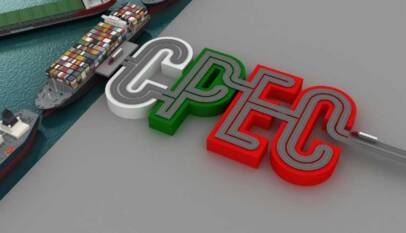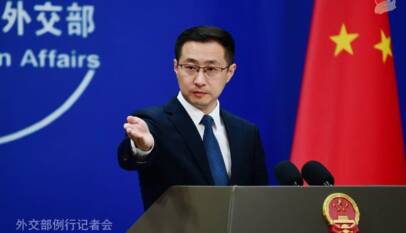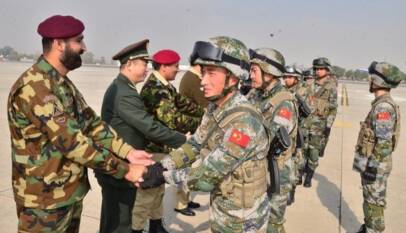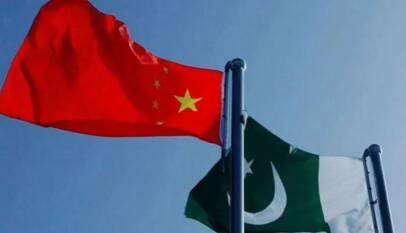BRI, CPEC an opportunity for tangible economic substance: Syed Wajahat Ali
Belt and Road Initiative (BRI) is transcontinental economic connectivityenvisioned in 2013 by China`s President Xi Jinping to “promote the connectivity of Asian, European and African continents and their adjacent seas, establish and strengthen partnerships among the countries along the Belt and Road, set up all-dimensional, multi-tiered, and composite connectivity networks, and realize diversified, independent, balanced and sustainable development in these countries.”
BRI incorporates the developing markets of 71 countries in Asia, Eastern Europe, Eastern Africa, and the Middle East.71 countries constituting more than a third of the world`s GDP and two-thirds of the world`s population arepart of this massive economic activity through six development corridors.CPEC is an important extension of this initiative connecting the Arabian Sea with the city of Kashgar in western China.
There is abroader consensusthat CPEC is positivelycontributing to the faltering economy of Pakistanby filling the capacity gap. The model is: provide ground, water gradient, raw material, regulatory concessions, and clientage to the foreign investors,getcheap energy,stimulateinfrastructure, communication, manufacturing, and allied services. China anticipatesrevenues out of an emerging market. China’s presence in the Arabian Sea will impact the economic, strategic, and geo-political dynamics of South Asia and the Middle East.
8 Coal Power Projects, 6 Wind Power Stations,6 Hydro Power Projects, one 878km long Transmission Line, and 1 Solar Park together constitute 13189 MW-energy section of CPEC.966-kilometer-long road network, expansion, and reconstruction of1830 km-long existing Line ML-1 are included in the infrastructure section. Gwadar Port Development is the flagship project. It includes an East-Bay Expressway, an International Airport, Breakwaters, berthing areas & channels, Free Zone, Hospital, Technical and Vocational Institute, and a Smart Port City Master Plan-with a total estimated cost of US$ M 694.
CPEC is an opportunity. The skill is to turn this opportunity into a tangible economic substance. What we need to learn is to unlearn the clichés
The engagement strategy for CPEC needs horizontal expansion. Local engineers, technicians, vendors needskills to design, construct, and operate such projects indigenously. The employment generation is a primarymotive for a populated country like China to push its economic muscle out of its borders, nevertheless, a multi-layered skill-transfer mechanism established through academic and vocational synergies is important to transform CPEC into a sustainable win-win by reducing the technical dependence of the host country.
Recently, a one-day Business-to-Business conference was organized byPakistan’s Board of Investment(BOI). Sector specialists from the construction industry, tourism, technology incubation, mining and minerals were invited from both countries. The initiative is in the right direction aiming to expand the engagement strategy on CPEC. A broader administrative and legal frameworkcanensure a work environment in line with the scope of a liberal investment regime. The smooth coordination between the federal and provincial agencies would play an important role to expedite the trickle-down effectof this engagement in the post-devolution scenario-the 18th amendment.
Ensuring a level-playing fieldin company-to-company interactionis necessary to establish a two-way economic flow.China has shown tremendous progress in industrial automation. For exploiting the technology explosion in favor of local industry, idea incubation, evaluation, feasibility, and networking are important. Board of Investment may initiate a more specific liaison facilityto guide foreign investors about the prospects of different ventures- a Central Business Assessment and Design facility.
Academia and policy think-tanks are the fulcrafor a long-term engagement strategy. Since 1978, the per capita GDP of China has accelerated at a rate of more than 8 percent per year. The major boost in per capita GDP was observed after 1978 economic reforms supplemented by rising in education level. In 1999, China devised the 21st Century Education Revitalization Plan, which constructed the prospects of national development on the foundations of research and technology.
Independent research collaborations between different working groups powered by the academic institutes of both countries to expound opportunities in research and development, technology incubation, public policy, mechatronics, and organizational management will seed the real transformation. Higher Education Commission of Pakistan, in consultation with the Ministry of Planning, Development and Reforms can devise a pragmatic plan to foster target-oriented joint research ventures.
Historically, the Chinese culture remained alien to the people of the Sub-continent other than those from Gilgit- Baltistanmainly due to less mobility possible across the lofty mountains. Cultural acceptability plays important role in framing a conducive business environment. Pakistan carries historical and cultural linkages with other foreign languages like English, Arabic, and Persian. Keeping in view the level of engagement, and to strengthen the people-to-people contact, it is pertinent to include the Chinese language as a proper subject in linguistic studies.
CPEC is an opportunity. The skill is to turn this opportunity into a tangible economic substance. What we need to learn is to unlearn the cliches. The choice is to remain on the client modeor to expand the collaborationhorizontallyto convert it into a sustainable, inclusive socio-economic development for the people of both countries.
Chinese Ambassador highlights significance of Third Plenary Session for China-Pakistan cooperation
The Third Plenary Session of the 20th Central Committee of the Communist Party of China ha…












